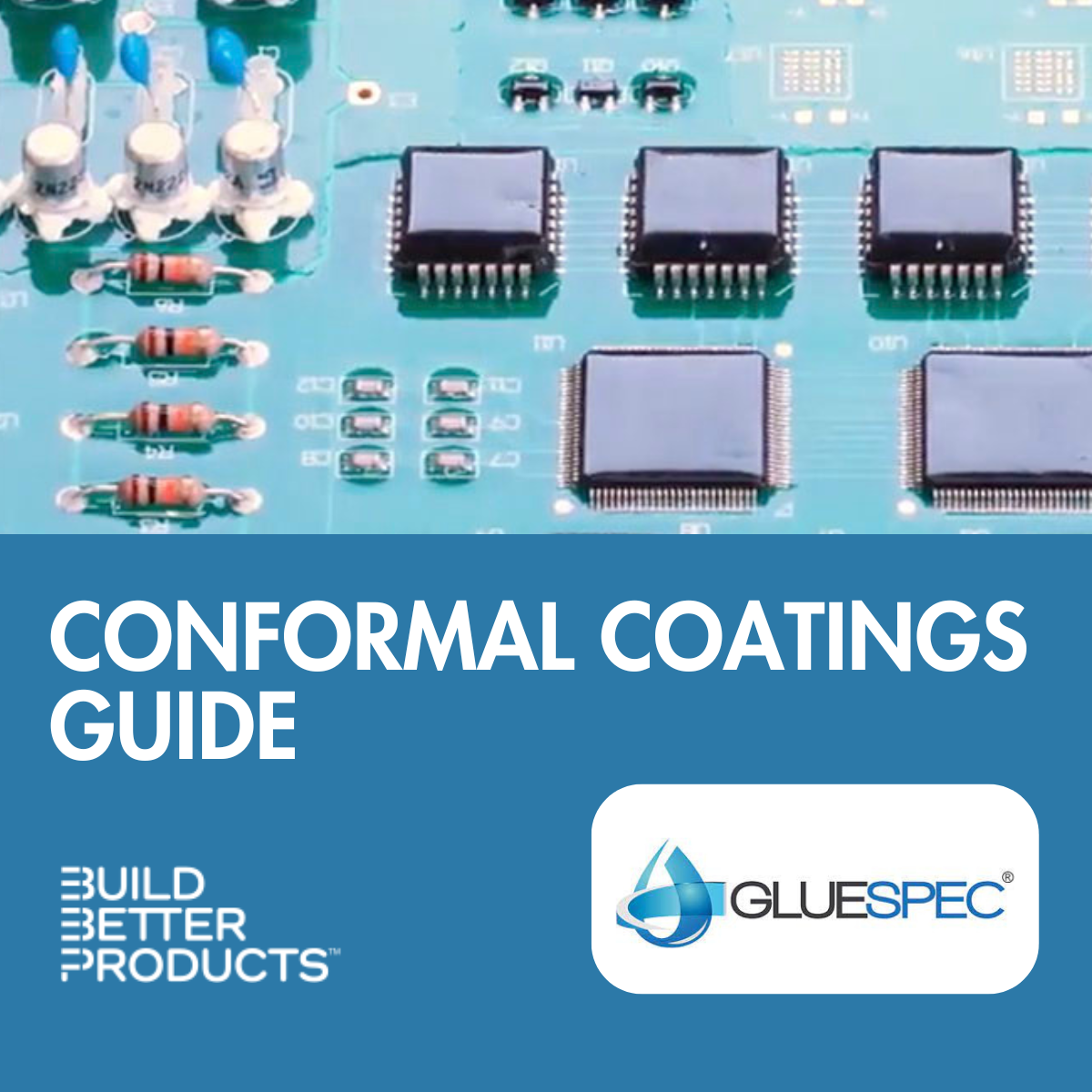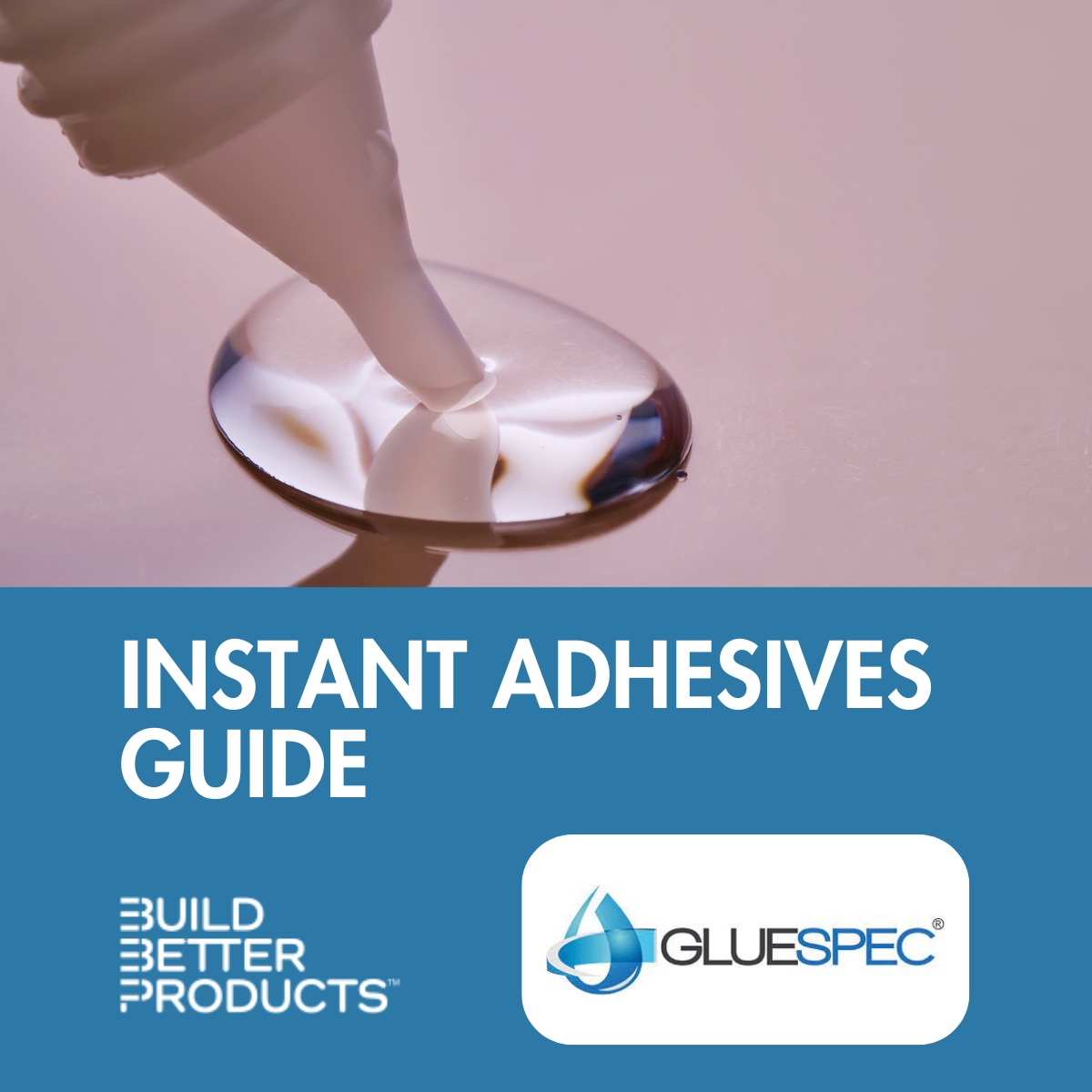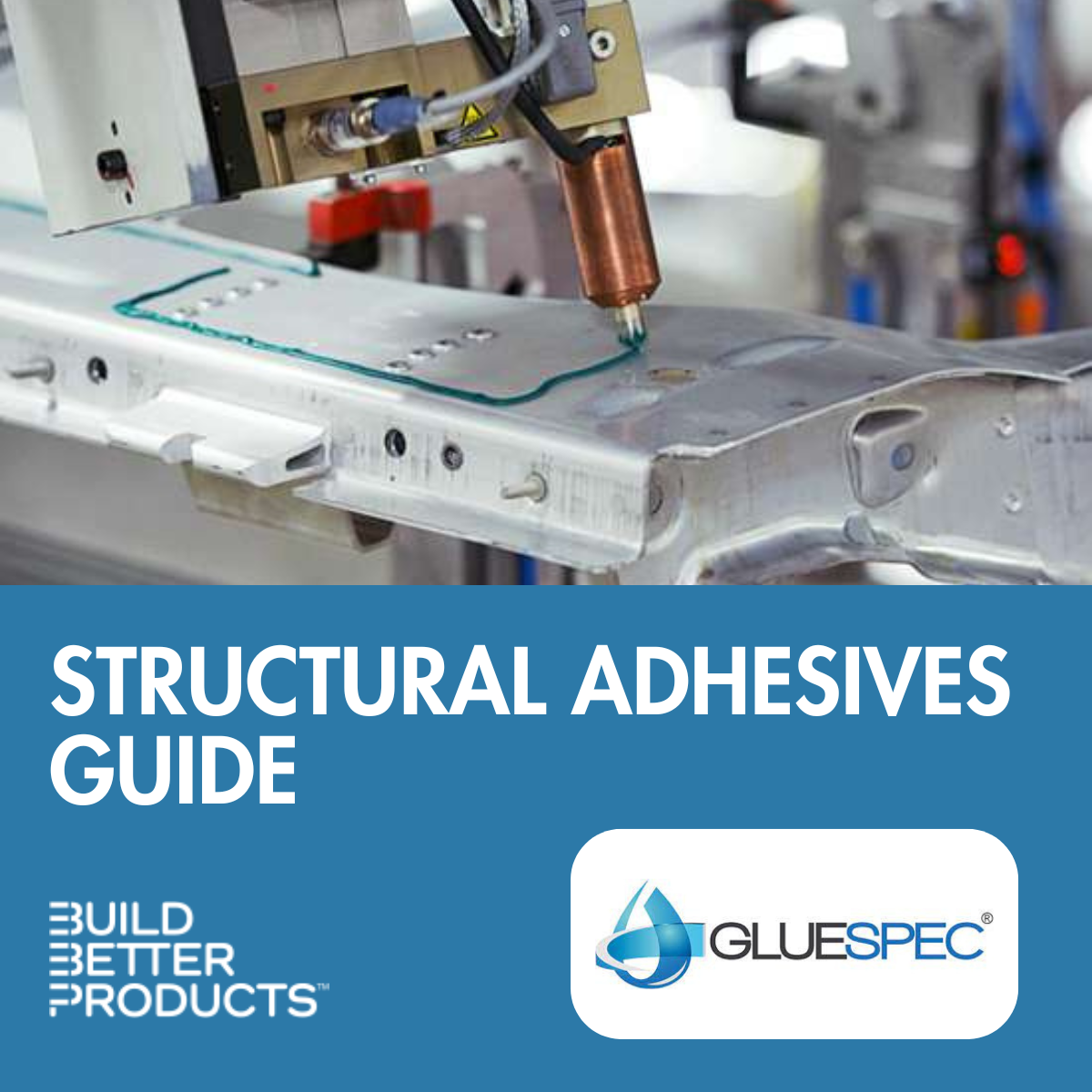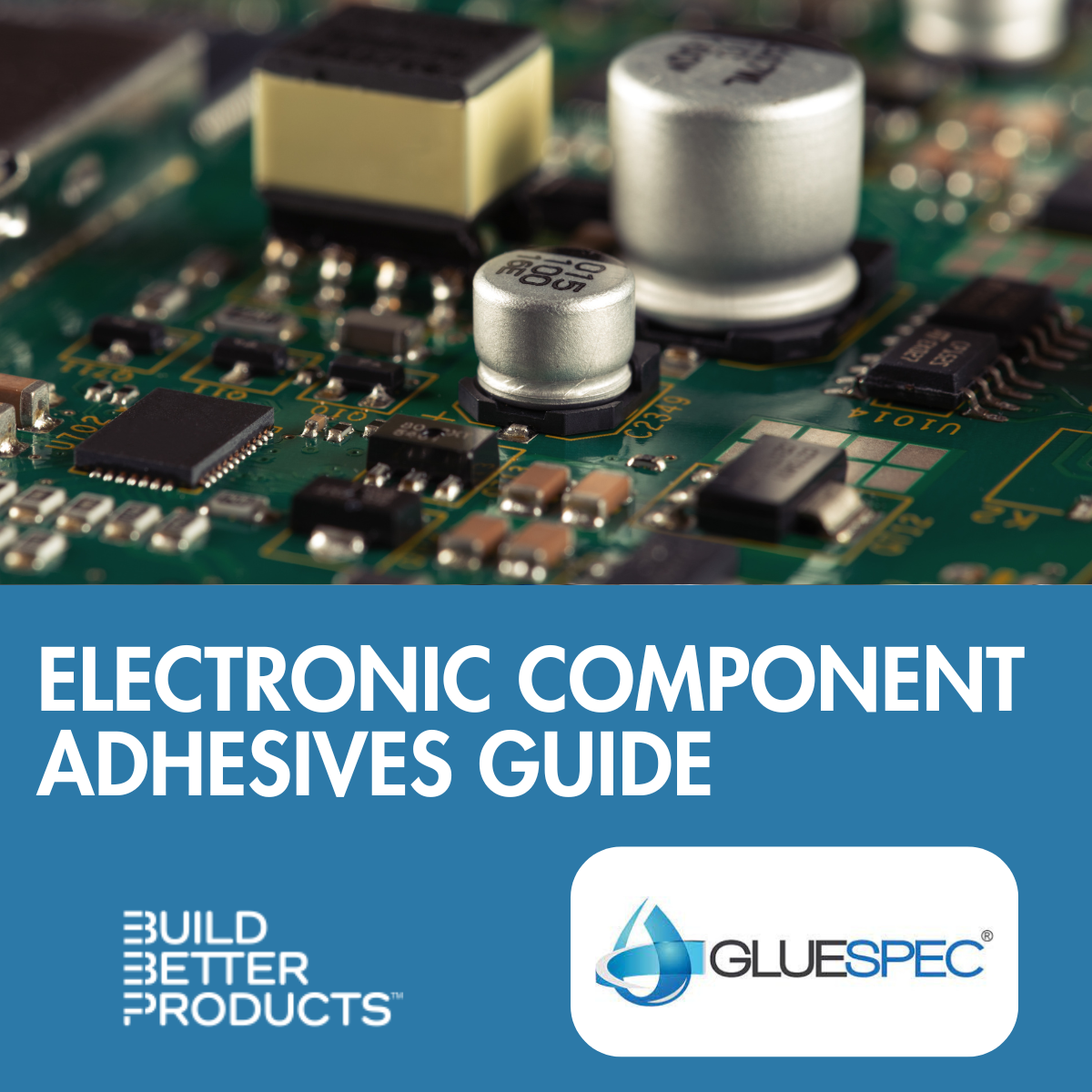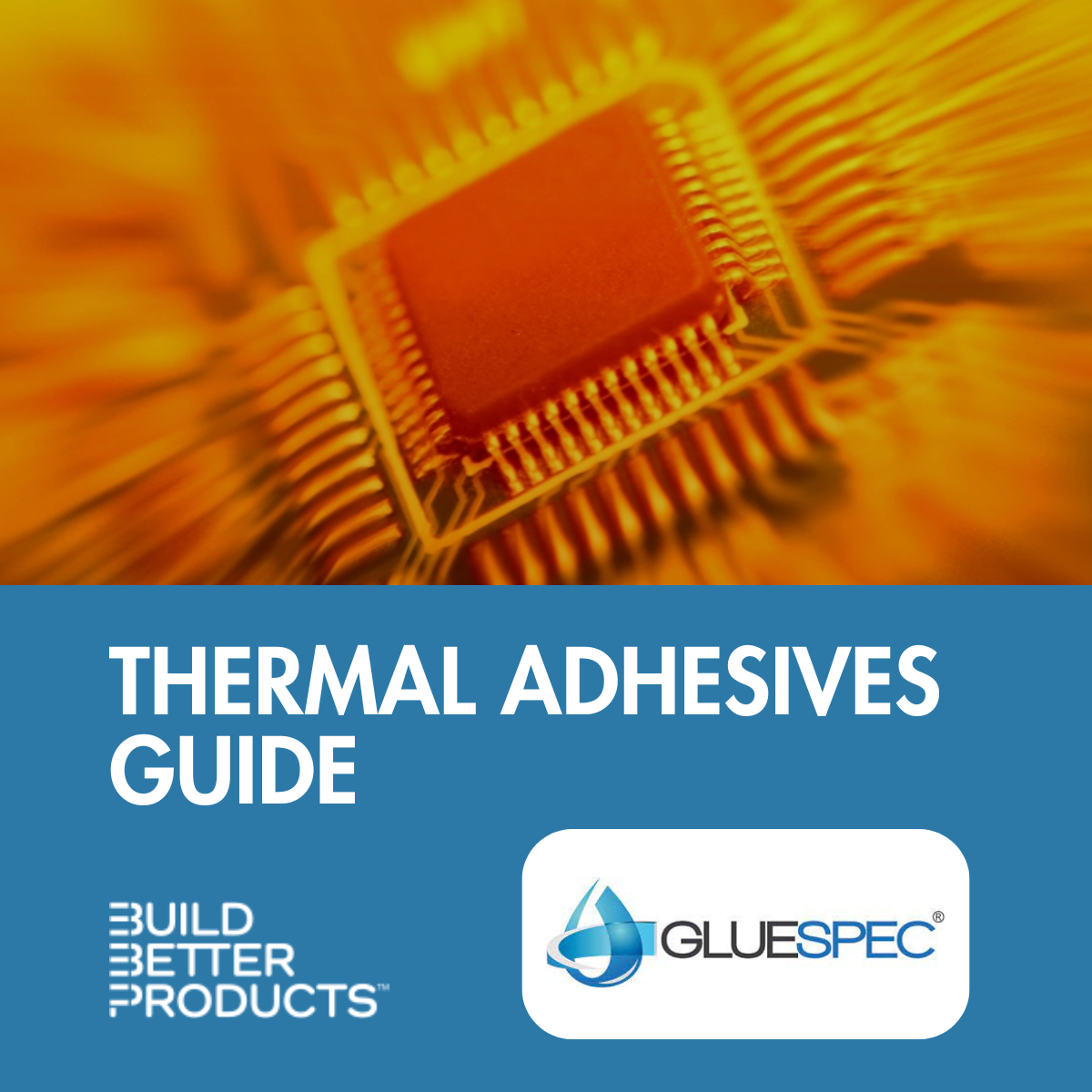

- Contributions by industrial experts with engineers in mind
- Focused on specialty-chemical material applications and selection
Knowledge Center
Energy Storage and Power Adhesives Guide
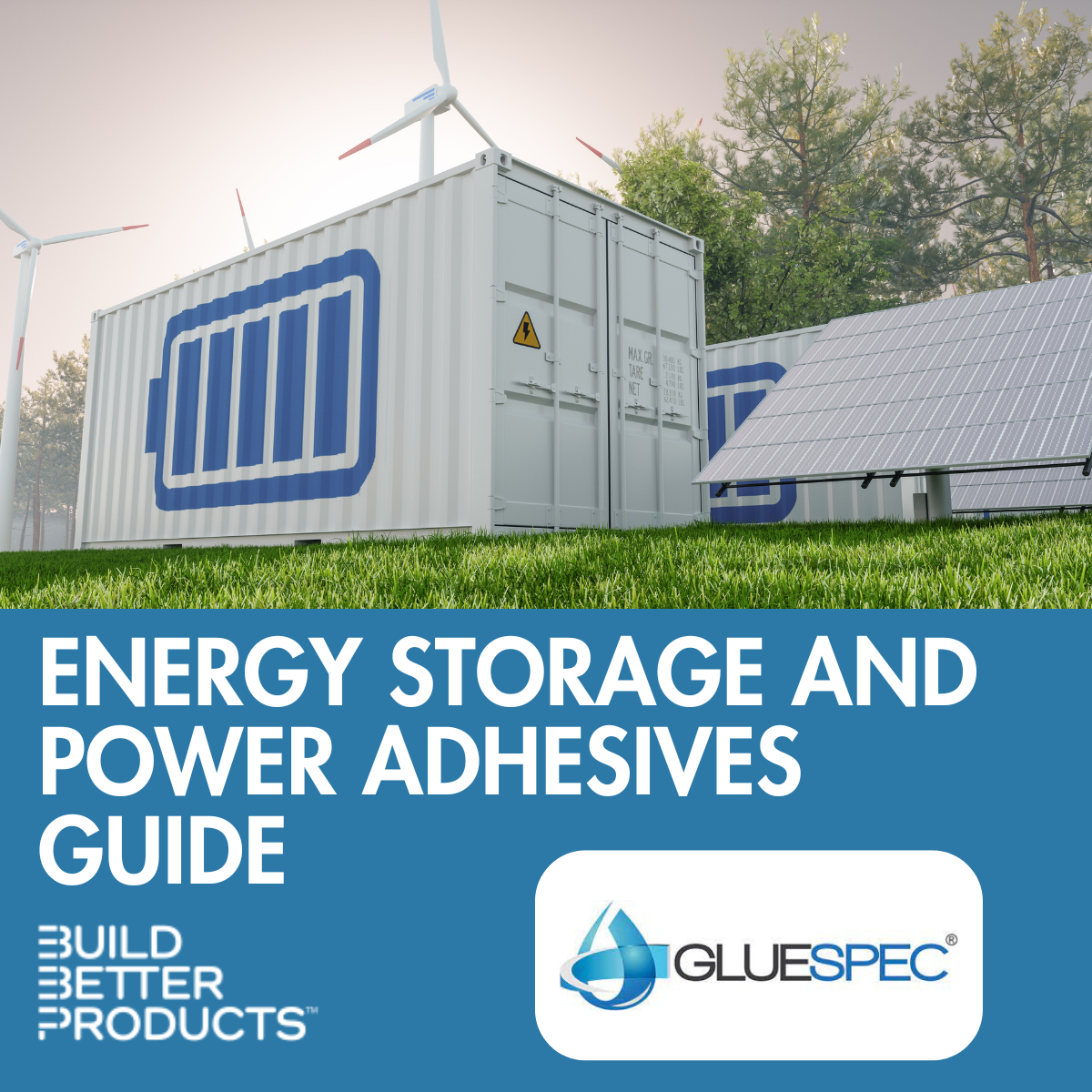
Listen to This Article
Battery systems, power supplies, and solar energy and wind energy projects need adhesives that provide reliable performance under demanding conditions.
This guide explans what design engineers need to know about selecting energy storage and power adhesives, a category of products you'll find on Gluespec.
Gluespec's comprehensive and quality-tested database of 35,000 adhesive materials includes the energy storage and power adhesives that design engineers need.
Along with technical data and key specifications, you’ll find best practices and comparable materials. You can also view test method information on dozens of material properties and data points.
Table of Contents
Electrically Conductive Adhesives
Introduction
Energy storage and power adhesives include structural adhesives, electrically conductive adhesives, thermal adhesives, and thread lockers.
Structural Adhesives
Structural adhesives are designed to withstand load-bearing forces and provide high-strength bonds, typically for the life of an assembly. They can rival welds in terms of shear strength while reducing joint movement and dampening vibrations. Typically, structrual adhesives use an epoxy or polyurethane chemistry. Some products can bond metal, plastic, or dissimilar substrates.
Electrically Conductive Adhesives
Electrically conductive adhesives combine strong, reliable adhesion with electrical conductivity. They consist of an electrically-insulating polymer that is filled with metal particles that conduct electricity. Electrically conductive adhesives that are silicone-based also offer protection against moisture and high temperatures while providing shielding against electromagnetic interference (EMI)
Thermal Adhesives
Thermal adhesives, or thermally conductive adhesives, help to move or dissipate heat in energy storage and power applications. Heat is the enemy of reliable electronics, but high heat is of special concern in batteries. If the heat generated within a battery exceeds the amount of heat that is dissipated to its surroundings, an uncontrollable self-heating state called thermal runaway may occur.
Thread Lockers
Thread lockers are adhesives for nuts, bolts, screws, or other threaded fasteners. They form a strong bond that prevents loosening and can withstand stress and vibrations. Although adhesives can replace fasteners completely, some energy storage and power applications need thread lockers to ensure long-lasting and reliable performance.
Battery Systems Adhesives
When selecting battery systems adhesives, design engineers must fully define their application requirements. For example, do you need an adhesive that resists sunlight or chemicals, or that dampens vibrations? Do you need an adhesive that conducts electricity or helps dissipate heat instead?
These are just some of the questions to ask, and battery systems adhesives differ in terms of chemistry, material compatibility, curing speed, and resistance. The chart below explains.
|
Chemistry |
Materials |
Curing Speed |
Environmental & Chemical Resistance |
Vibration Resistance |
|
Epoxy |
Steel SMC Aluminum Carbon fiber |
Low |
Excellent |
Excellent |
|
Acrylic |
Aluminum Steel Plastics |
Medium |
Good |
Excellent |
|
Urethane |
Steel Composites Nylon blends PBT |
Fast |
Okay |
Good |
Source: 3M
Note: Adhesives aren’t the only battery system materials you can find on Gluespec. Searchable products include gap fillers, conformal coatings, and materials for potting and encapsulation.
On Gluespec, battery systems adhesives are divided into battery cell adhesives, battery module adhesives, and battery pack adhesives.
Battery Cell Adhesives
Battery cells are individual electrochemical devices that consist of positive and energy plates, a separator, and an electrolyte. Today, lithium-ion (Li-ion) is the most common battery chemistry because of its combination of power and affordability. Applications for Li-ion battery cells include electric vehicles (EVs) and battery energy storage systems (BESS).
There are three main types of battery cells: cylindrical, prismatic, and pouch. Cylindrical cells are the least expensive but are limited in terms of power. Prismatic cells are physically larger and can deliver more power and store more energy. Pouch cells provide the most power but have a soft plastic case that provides limited mechanical resistance.
Structural adhesives are used during battery cell construction, but low-pressure molding compounds are used to encase cells in a single unit.
Products
These are some of the battery cell adhesives you'll find on Gluespec.
 |
EV Bond 701 from H.B. Fuller is a hot-melt PSA with outstanding initial tack and green strength. |
 |
Loctite ECI 1010 E&C from Henkel combines good adhesion and high thermal conductivity. |
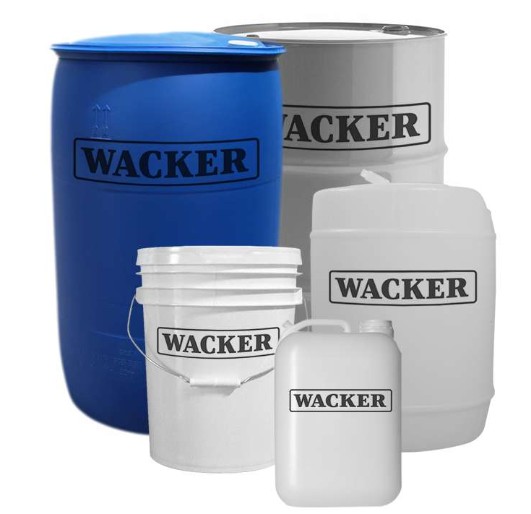 |
Elastosil LR 3842/50 A/B from Wacker is a two-part silicone PSA that cures rapidly with heat. |
Battery Module Adhesives
Battery modules are groups of battery cells that are connected in series or parallel. Structural adhesives provide bonding, and electrically conductive adhesives can provide specific levels of EMI shielding. Thermally conductive adhesives can withstand high temperatures and help dissipate excessive heat.
Products
These are some of the products you'll find on Gluespec.
 |
Dowsil 3-2625 Thixotropic Adhesive from Dow is a one-part, non-flowing adhesive with high tensile strength. |
 |
SEC 1222 from Resinlab is a silver-filled, two-part epoxy adhesive that combines electrical conductivity with resistance to water, chemicals, and salt spray. |
 |
TC-2810 from 3M is a two-part, thermally conductive liquid epoxy with good adhesion and a boron nitride (BN) filler. |
Explore Battery Module Products
Battery Pack Adhesives
Battery packs are a series of individual modules and related systems that are organized and enclosed into a specific shape to fit a larger product, such as the battery compartment within an EV. Structural adhesives, electrically conductive adhesives, and thread lockers are all used. Additional battery pack materials include sealants and gap fillers.
Products
These are some of the products you'll find on Gluespec.
 |
Dowsil 3-4207 Dielectric Tough Gel from Dow is a two-part, primerless product that dampens vibrations. |
 |
Technomelt PA 678 Black from Henkel is a one-part, moldable polyamide for higher-temperature applications. |
 |
Cooltherm SC-1200 from Parker Lord is a two-part, thermally conductive silicone gap filler that is non-flammable. |
Tech Specs
Here are some of the technical specifications for battery cell, battery module, and battery pack adhesives.
|
Type |
Spec |
Definition |
|
Cure |
Viscosity (cPs)
|
A measure of a fluid’s resistance to flow. |
|
Bond Strength |
Shear Strength (psi)
|
The ability of a material to resist forces that cause the material’s internal structure to slide against itself. |
|
Conductivity |
Dissipation Factor |
A measure of loss-rate of energy of a mode of oscillation (mechanical, electrical, or electromechanical) in a dissipative system |
|
Other Properties |
Specific Gravity |
The ratio of the density of a substance to the density of some substance (such as pure water) taken as a standard when both densities are obtained by weighing in air |
Resources
Here are some additional resources about battery systems adhesives.
- Energy Storage Materials Guide
- Battery Construction Issues and Special Material Solutions
- Structural Adhesives for EV Batteries
Power Supply Adhesives
Power supply adhesives are used to attach heatsinks and electronic components within power supplies, devices that convert electrical current and provide power to electrical loads. Adhesives aren’t the only power supply materials you’ll find on Gluespec, and searchable products include pottants, encapsulants, sealants, conformal coatings, and gap fillers.
Unlike mechanical fasteners, power supply adhesives are lightweight and non-corrosive. They can also eliminate the need for fastener insertion and attachment while supporting high-volume, automated production. Applications for power supply adhesives include EV chargers and electrical vehicles as well as BESS solutions that leverage wind or solar power.
Power supply adhesives can provide structural bonding, but some applications need thermal management materials that can dissipate heat. Thermally conductive adhesives use silicone, epoxy, or urethane chemistries and come in one-part and two-part systems with different curing methods.
Products
These are some of the power supply adhesives you'll find on Gluespec.
 |
3145 RTV Clear Adhesive/Sealant from Dow is a one-part, non-corrosive silicone adhesive with high tensile strength. |
 |
Multi-Cure 984-LVUF from Dymax is a one-part, acrylated urethane adhesive that is solvent-free. |
 |
Loctite Stycast 5954 from Henkel is a two-part liquid silicone with high thermal conductivity. |
Explore Power Supply Adhesives
Tech Specs
Here are some of the technical specifications for power supplies adhesives.
|
Type |
Spec |
Definition |
|
Cure |
Linear Shrinkage (%)
|
Escape of volatile substances or chemical changes that result in volume decrease or contraction of a material. The amount of dimensional change during the cure process. |
|
Hardness |
Flexibility
|
The ability to bend easily or without breaking |
|
Conductivity |
Dielectric Strength (V/mil) |
The electrical strength of an insulating material |
|
Other Properties |
Light Refractive Index (RI) |
A value calculated from the ratio of the speed of light in a vacuum to that in a second medium of greater density |
Resources
Here are some additional resources about power supplies adhesives.
- Power Supply Protection Materials
- Thermally Conductive Adhesives for Power Supplies
- Thermal Gap Fillers for Power Supplies
Solar Energy Adhesives
Solar energy adhesives are used for structural bonding during the installation or repair of photovoltaic (PV) panels. They’re also used for attaching junction boxes to PV panels and bonding mirrors to support frames. Acrylate and epoxy adhesives provide strong bonds, but silicone-based adhesives also allow for thermal expansion and contraction without a loss in joint integrity.
Regardless of chemistry, solar energy adhesives provide advantages over mechanical fasteners like screws and U-bolts For example, adhesives eliminate stress points and can provide insulation and weatherproofing. Many solar energy adhesives can also bond dissimilar materials. Electrically conductive silicone-based adhesives that are filled with silver particles provide excellent EMI shielding.
In addition to adhesives, Gluespec makes it easy to search for sealants, pottants, encapsulants, and conformal coatings used by the solar industry.
Products
These are some of the solar energy adhesives you'll find on Gluespec.
 |
Sylgard 183 Silicone Elastomer from Dow is a two-part, liquid silicone product that remains flexible after curing and exhibits minimal shrinkage. |
 |
UV40 UV Curable Conformal Coating from HumiSeal is a one-part, liquid acrylated polyurethane product with excellent chemical resistance. |
 |
Silicone Brown Package #04030 from Hardman is a one-part silicone that cures with atmospheric moisture to a flexible, durable rubber. |
Explore Solar Energy Adhesives
Tech Specs
Here are some of the technical specifications for solar energy adhesives.
|
Type |
Spec |
Definition |
|
Cure |
Cure Time (min)
|
The length of time needed for something to fully cure |
|
Material Resistance |
Fungus Resistance
|
Fungus-resistance tests are used to determine the reaction of adhesives to several species of fungi under high humidity and a warm environment in the presence of inorganic salts |
|
Conductivity |
Dielectric Constant |
The ratio of an insulator’s capacitance to that of dry air. A dielectric constant of 10 means the insulator will absorb 10x more electrical energy than air |
|
Other Properties |
% Solids |
The percentage by weight of the nonvolatile matter in an adhesive |
Resources
Here are some additional resources about solar energy adhesives.
- Silicones in the Photovoltaic Solar Industry
- Urethanes in the Photovoltaic Solar Industry
- Adhesives for Solar Power Manufacturing
Wind Energy Adhesives
Wind energy adhesives are used for bonding wind turbine blades during installation and repairs. They’re also used for rotor bonding, yaw drive applications, and for joining gears to shafts. Environmental and vibration resistance are critical because wind energy adhesives need to withstand a range of weather conditions along with vibrations caused by turbine operations and strong winds.
Unlike fasteners, which are prone to loosening from vibrations, wind energy adhesives distribute pressure points evenly across the entire bond. They also support lightweighting efforts that can improve the lifespan of wind turbine blades, which are typically made of carbon fiber. Today, many wind energy adhesives are designed to bond dissimilar substrates such as metals and plastics.
Often, two-part thixotropic adhesives are used in turbine blade bonding. That’s because the two components, the resin and the hardener, won’t slump after mixing.
Products
These are some of the wind energy adhesives you'll find on Gluespec.
 |
Speedmask 734-BT from Dymax is a one-part, acrylated urethane gel that cures with UV/visible light. |
 |
ET515 from Permabond is a two-part, liquid epoxy that is clear, flexible, and provides excellent impact resistance. |
 |
Flex-521 UV from Sika is a one-part, PVC-free paste that's based on silane-terminated polymer technology. |
Tech Specs
Here are some of the technical specifications for wind energy adhesives.
|
Type |
Spec |
Definition |
|
Cure |
Work / Pot Time (min)
|
The length of time in which multiple part coatings or paints can be applied to a surface |
|
Bond Strength |
Peel Strength (piw)
|
A measure of the adhesive strength of two or more materials that have been bonded together |
|
Shear Strength (psi) |
A measure of a material’s ability to resist forces that cause the material’s internal structure to slide against itself |
|
|
Hardness |
Elongation % |
The process of becoming or making something become longer, and often thinner |
Resources
Here are some additional resources about wind energy adhesives.
- The Effectiveness of Adhesives in the Wind Power Industry
- Wind Energy Adhesives and Sealants
- Wind Industry Solutions
Gluespec is Your Source for Energy Storage and Power Adhesives
Gluespec’s comprehensive and quality-tested database of 35,000 adhesive materials includes the energy storage and power adhesives that design engineers need. The materials and manufacturers in our database are not limited to specific suppliers, and data is quality-checked and updated as needed whenever new data sheets or product specifications are released.
If you need deep data on energy storge and power adhesives or other materials, you’ll find what you’re looking for in our proprietary adhesives database. Along with technical data and key specifications, you’ll find best practices and comparable materials. Design engineers can also view test method information on dozens of material properties and data points.
Finally, Gluespec’s Advanced Search provides the tools you need to conduct deep filtering among all material properties. The result is a customized grid that contains materials and data points that are specific to your project. Save custom grids for quick access and share them, along with this Energy Storage and Power Adhesives Guide, with your colleagues.

